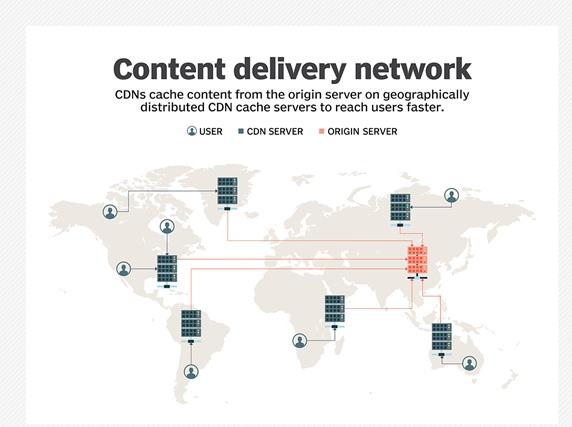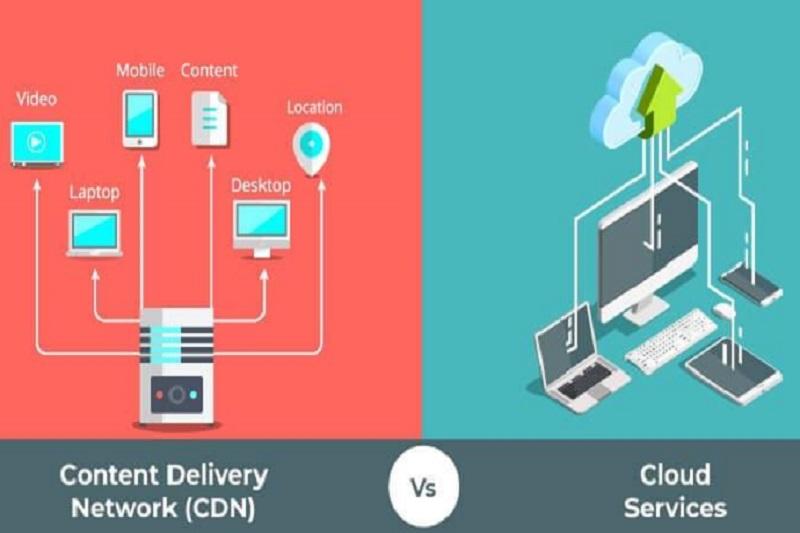What Is The Difference Between Content Delivery Network And Cloud Computing?
At First Glance, A Content Delivery Network And A Traditional Cloud Infrastructure Might Look Like This.
However, these technologies are used for different purposes and are therefore different from each other.
What is a CDN?
As the Internet provides global content and digital services, users must spend variable time accessing resources. This delay in accessing content depends on the servers that store the information, their location, and the distance users are from the servers.
One solution to this problem is to bring users and content closer together. For example, suppose you want to read an article uploaded to a website. The above strategy reduces the latency because to access the data, and the user request does not have to go through different hops.
If the web hosting servers are located in continental Europe, your request for access to the content must go through various hops, gateways, and networks to reach the server based in Europe, and then the server will process your request twice.
Follows the path to view the content you need in your browser.
As you can see, depending on the bandwidth, the website, the Internet you are using, and whether the server is busy or lonely, you will have to wait a while to get the content you want.
Now, if these servers are located in Iran, your request will send to the server via a vast area network or intranet (depending on the site you intend to visit), and the content will be provided to you. The difference between the two methods is that you do not need external bandwidth to access the content inside the internal network, and you will have access to the required content in a shorter time.
What technology allows us to get the content we need in the shortest possible time? Response What technology will enable us to get the content we need in the shortest possible time? Response What technology allows us to get the content we need in the shortest possible time? Response The content delivery network (CDN ) stands for content delivery network.

CDNs have been developed to access web-hosted data in a reasonable amount of time based on the geographical location of the users.
Given that multimedia users require a large portion of the content, if we can place users’ content in each area on servers that are physically close to users, it will significantly reduce the speed of access to information. These distribution sites, called Dubbed Points of Presence (POPs), are interconnected and managed through a network so that content can be updated or accessed quickly.
When users try to access the content of a CDN, the platform refers them to the nearest POP containing the requested information. This framework lets users quickly access content and reduce network congestion at peak workloads.
CDN is not limited to delivering distributed content and can support native ads, video streams, e-commerce, online stores, and interactive websites that users need. Figure 1 shows the function of the content delivery network.
A content delivery network is a network of servers used to deliver content at its most basic level.
It works so that one or more servers are designated as “source” servers, and the other servers are distributed in different locations as “cache” servers.
These caches are implemented based on strategic approaches to be geographically close to ending users in different regions. Source content or media is stored on the source server (s) and sent to cache servers if needed.
When a user requests a resource or content, an URL belongs to the content delivery network. The domain name service (DNS) is provided, equivalent to the IP address requested by the user. It is done to fetch content from a cache server and respond to user requests. The above approach reduces the distance that information travels, leading to delays in accessing information.
More precisely, the speed of content delivery to end users increases. Also, by distributing the load between the servers located in different areas, the central server (s) workload decreases.
The content delivery network uses
A content delivery network is primarily used to deliver the content of large files that are often fixed, such as video files, music, and large images. However, it has recently received much attention in connection with multimedia streaming streams.
For example, an organization that provides video content to thousands of users in Iran every week is a content delivery network. This content delivery method is different from the traditional delivery method in which all users connect to a centralized server. It is applied technology.
Encounter content delivery. In a traditional centralized server mechanism, the user experience of accessing content depends on various factors, such as their distance from the server. For example, users may have problems if the centralized server has limited the number of users’ connections or there are not enough resources on the server.
In addition, other problems such as broken links, increased response time, etc., can lead to delays in accessing content. Content delivery networks solve these problems by storing multimedia streams on local cache servers. As mentioned, this reduces the workload of the central server and ensures that the delay between buffering video streams is minimized.
What is Cloud Computing?
Cloud ComputingStrategic technology has evolved to reduce the cost of delivering programs and content by correctly and intelligently using resources. Most computer systems have a lot of unused resources when they provide a range and applications to a small number of users.
Server virtualization is developed to optimize a host’s resources (CPU, memory, and storage) and share them with several virtual machines, each of which runs its applications and delivers its content.
Hypervisor technology, which controls virtualized servers, has advanced significantly. It has evolved since the advent of the cloud to enable the management of a set of hosts, each multiple running VMs that share resources even if a physical host fails.
This way, cloud technologies, and virtual machines add flexibility and reliability to host applications by abstracting their functionality from the underlying physical hardware.
VM images can also be shared and deployed across multiple areas, allowing your applications to get closer to the end-user for further enhancement. Less performance and latency, like a CDN, operates. And as the number of users increases, turning a new VM is more accessible, cheaper, and faster than getting new hardware. Cloud computing comes in various formats, from custom clouds with designs and powerful metal configurations to public cloud providers such as AWS and Azure.
Uses of cloud computing
While the primary function of resource management cloud computing is to make hosts and networks more efficient to reduce the cost of providing content and applications, this technology allows you to easily install images on a host or server or deploy clusters of hosts. So it can improve the user experience by placing the program or content in multiple.
In addition, they allow you to develop post-disaster recovery strategies without much complexity and use them easily in the event of a problem. They also allow you to use more resources or reduce their use, depending on the need for your work, which leads to economic savings. Typically, some organizations have cloud computing environments that are used to reduce hardware costs and easy access to shared resources hosted on virtual machines.
The above approach is much more straightforward and less expensive than having different physical hosts to do other tasks such as database deployment, customer relationship management (CRM), email server, and …. With the expansion of business activities, organizations can easily use more virtual hosts to meet business needs.
Content delivery network versus cloud, similarities, and differences
Cloud computing and content delivery networks are similar because they each receive and provide content hosted on servers distributed in geolocation. However, there are some differences. A content delivery network processes this process as quickly as possible, while cloud computing delivers content and request data based on flexibility and scalability.
Data access is a significant challenge when using cloud computing. Most companies are concerned that unauthorized people may gain access to their sensitive data, so they prefer to use private clouds.
In many ways, a CDN is more like today’s edge computing architecture than a traditional cloud computing framework. Similar to a content delivery network, edge computing focuses on users accessing resources from anywhere with low latency.











